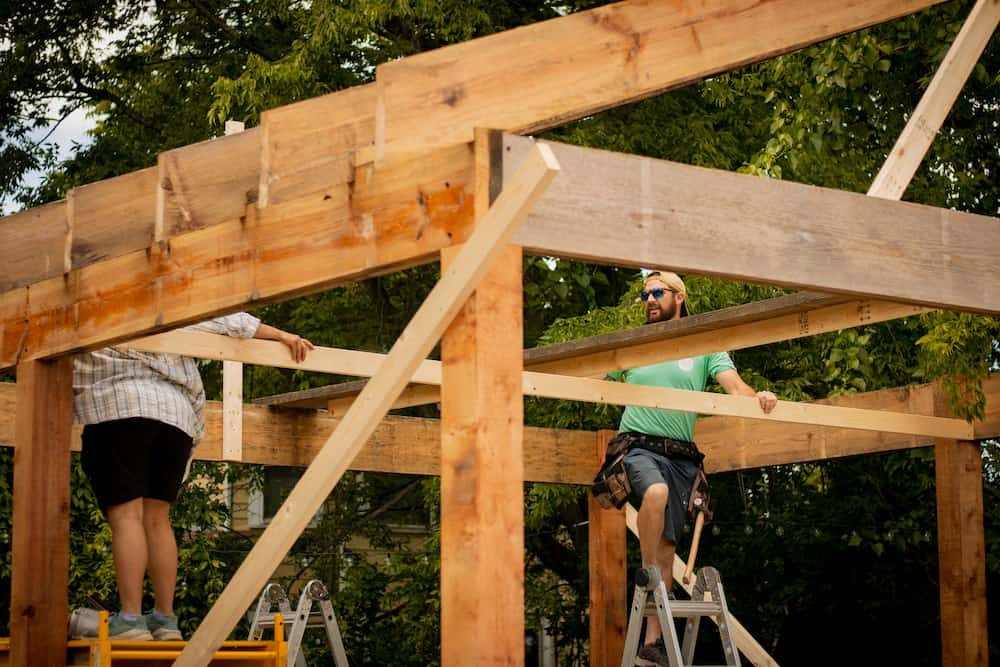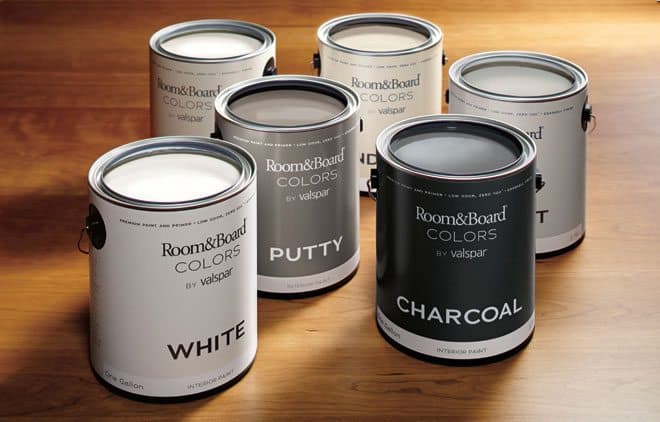Sustainable home building has become an increasingly vital topic as the world recognizes the importance of preserving our environment. Traditional building materials have had a significant impact on our planet, often resulting in ecological degradation.
However, there is a growing shift towards sustainability in the construction industry, and innovation is playing a pivotal role in this transformation. Let’s discuss the need for sustainable home building, the role of innovation in driving sustainability, key innovative materials, the future of sustainable home building, and the importance of embracing sustainable practices.

Understanding the Need for Sustainable Home Building
The impact of traditional building materials on the environment cannot be understated. The extraction of raw materials, high energy consumption during manufacturing, and waste generation have all contributed to environmental concerns. Furthermore, the depletion of finite resources poses a significant threat to future generations. To combat this, there has been a growing awareness of the need for sustainable home building.
The Impact of Traditional Building Materials
Traditional building materials such as concrete and steel have been widely used due to their strength and durability. However, the production of these materials contributes to greenhouse gas emissions and energy consumption. Additionally, the extraction of resources for these materials has led to deforestation and habitat destruction. It is crucial to explore alternative materials that can mitigate these environmental impacts.
One such alternative material is bamboo. Known for its rapid growth and strength, bamboo is a sustainable option for construction. It requires minimal energy to grow and can be harvested without causing significant damage to the environment. In fact, bamboo can absorb more carbon dioxide and release more oxygen than most trees, making it an excellent choice for reducing greenhouse gas emissions.
The Shift Towards Sustainability in Construction
Thankfully, the construction industry has recognized the need for sustainable practices. Builders, architects, and homeowners are increasingly seeking ways to reduce their environmental footprint. This shift towards sustainability encompasses not only the use of alternative materials but also the adoption of eco-friendly construction techniques and energy-efficient designs. Innovation is at the forefront of this movement.
One innovative technique gaining popularity is passive solar design. By strategically positioning windows and using materials with high thermal mass, passive solar design maximizes natural light and heat from the sun, reducing the need for artificial lighting and heating. This not only saves energy but also creates a more comfortable and sustainable living environment.
Furthermore, the use of renewable energy sources, such as solar panels and wind turbines, is becoming increasingly common in sustainable home building. These technologies harness the power of nature to generate clean energy, reducing reliance on fossil fuels and minimizing greenhouse gas emissions.
The Role of Innovation in Sustainable Home Building
Innovation plays a crucial role in driving sustainability within the construction industry. It offers solutions to the challenges posed by traditional building materials and methods. By exploring new materials, technologies, and construction techniques, we can reduce our environmental impact and create homes that promote a greener future.
How Innovation Drives Sustainability
Through innovation, we can create materials and systems that are more energy-efficient, less resource-intensive, and have a lower carbon footprint. For example, advancements in insulation materials have led to improved energy efficiency, reducing the demand for heating and cooling. This not only saves homeowners money on energy bills but also reduces greenhouse gas emissions, contributing to a healthier planet.
In addition to energy efficiency, innovation also allows for the development of materials that can be recycled or repurposed, minimizing waste and conserving resources. For instance, the use of recycled steel in construction has gained popularity due to its durability and sustainability. By repurposing steel from old structures, we can reduce the need for new steel production, which requires significant amounts of energy and contributes to carbon emissions.
Challenges and Opportunities in Material Innovation
While material innovation presents immense opportunities, it also comes with challenges. Developing new materials requires extensive research, testing, and collaboration between scientists, engineers, and manufacturers. It is a complex process that demands careful consideration of factors such as durability, cost-effectiveness, and environmental impact.
However, as the demand for sustainable materials grows, so does the opportunity for innovation. The construction industry is witnessing a surge in investment and research dedicated to developing eco-friendly alternatives to traditional building materials. This creates a positive feedback loop where advancements in material innovation drive further sustainability in home building.
Moreover, material innovation is not limited to the construction phase alone. It extends to the maintenance and renovation of homes as well. For example, the development of self-healing concrete, which uses bacteria to repair cracks, can significantly extend the lifespan of buildings, reducing the need for frequent repairs and replacements. This not only saves costs but also reduces the environmental impact associated with the production and disposal of construction materials.
In conclusion, innovation plays a pivotal role in shaping the future of sustainable home building. By embracing new materials, technologies, and construction techniques, we can create homes that are not only aesthetically pleasing but also environmentally friendly. The challenges in material innovation are being met with determination and collaboration, paving the way for a greener and more sustainable construction industry.
Key Innovative Materials for Sustainable Home Building
Several materials have emerged as frontrunners in sustainable home building, offering eco-friendly alternatives to traditional options. Through their unique properties, these materials contribute to reduced environmental impact and improved sustainability.
Bamboo as a Building Material
Bamboo is highly sustainable due to its rapid growth rate and natural abundance. It can be used for various construction purposes, including structural elements and finishes. Bamboo is incredibly strong, lightweight, and possesses excellent flexibility. Its use reduces the demand for traditional wood, which helps conserve forests and protect biodiversity.
Moreover, bamboo is not only environmentally friendly but also aesthetically pleasing. Its natural beauty adds a touch of elegance to sustainable homes, creating a harmonious blend of nature and modern design. Imagine walking into a bamboo-clad living room, where the warm hues and intricate patterns of bamboo create a serene and inviting atmosphere.
Recycled Steel and its Uses
Recycled steel offers a sustainable alternative to conventional steel production. By using recycled materials, we reduce the need for further mining and energy-intensive production processes. Recycled steel can be used for structural support, roofing, and cladding, providing strength and durability while minimizing environmental impact.
Furthermore, the use of recycled steel in sustainable home building can also contribute to the reduction of waste. By repurposing steel from old buildings or discarded materials, we divert them from landfills and give them a new life. This not only reduces the environmental burden but also promotes a circular economy, where resources are reused and recycled in a continuous loop.
The Potential of Rammed Earth
Rammed earth is an ancient construction technique that utilizes a mixture of soil, gravel, and stabilizers to create load-bearing walls. This technique requires minimal energy input and produces a long-lasting, environmentally friendly result. The thermal mass of rammed earth also helps regulate indoor temperatures, reducing the need for excessive heating or cooling.
Imagine living in a rammed earth home, where the walls exude a sense of solidity and connection to the earth. The natural textures and earthy tones create a soothing ambiance, bringing you closer to nature while enjoying the comforts of modern living. Rammed earth homes not only provide a sustainable living environment but also offer a unique and tranquil retreat from the hustle and bustle of everyday life.
The Benefits of Using Reclaimed Wood
Reclaimed wood refers to wood that has undergone previous use and is repurposed for construction projects. It reduces the demand for newly harvested timber, thereby preserving forests. Additionally, reclaimed wood possesses unique character and aesthetic appeal, creating a sense of history and authenticity within sustainable homes.
Imagine walking into a sustainable home with reclaimed wood flooring, where each plank tells a story of its previous life. The knots, grain patterns, and weathered textures add a touch of rustic charm and warmth to the space. Not only does reclaimed wood contribute to sustainability, but it also adds a sense of soul and character to the home, making it truly one-of-a-kind.
The Future of Sustainable Home Building
The journey towards sustainable home building does not end with the current innovations. Predicted trends suggest that the industry will continue to evolve, incorporating new materials, technologies, and practices. This continuous innovation is crucial for achieving long-term environmental sustainability and meeting the demands of a growing global population.
Predicted Trends in Material Use
In the future, we can anticipate the emergence of materials that are even more sustainable and energy-efficient. Researchers are exploring the use of bio-based materials, such as mycelium and algae, which possess unique properties and can be grown sustainably. Advanced composites and nanomaterials are also being investigated for their potential in improving durability and reducing energy consumption.
The Role of Technology in Sustainable Building
Technology will play a pivotal role in the future of sustainable home building. Advancements in building automation, renewable energy integration, and smart home technology will further enhance energy efficiency and minimize environmental impact. Additionally, the use of virtual reality and artificial intelligence in the design and planning stages will allow architects and builders to optimize sustainability strategies.
Conclusion: Embracing Sustainability in Home Building
Embracing sustainable practices in home building is not only an ethical choice but also a wise investment in our future. By understanding the need for sustainability, the role of innovation, exploring innovative materials, and staying ahead of future trends, we can create homes that are not only environmentally friendly but also offer long-term benefits to their occupants.
The Importance of Adopting Sustainable Practices
Our planet is facing unprecedented challenges, from climate change to resource depletion. It is vital that we adopt sustainable practices in every aspect of our lives, including home construction. By making conscious choices, using innovative materials, and implementing environmentally friendly techniques, we can reduce our ecological footprint and mitigate further damage to our planet.
The Long-Term Benefits of Sustainable Home Building
Building homes with sustainability in mind offers numerous benefits. Energy-efficient designs lead to reduced utility bills and a smaller carbon footprint. Sustainable materials ensure a healthier living environment by minimizing indoor air pollution and reducing exposure to harmful chemicals. Moreover, sustainable homes have higher resale value and appeal to a growing market of environmentally conscious buyers.



